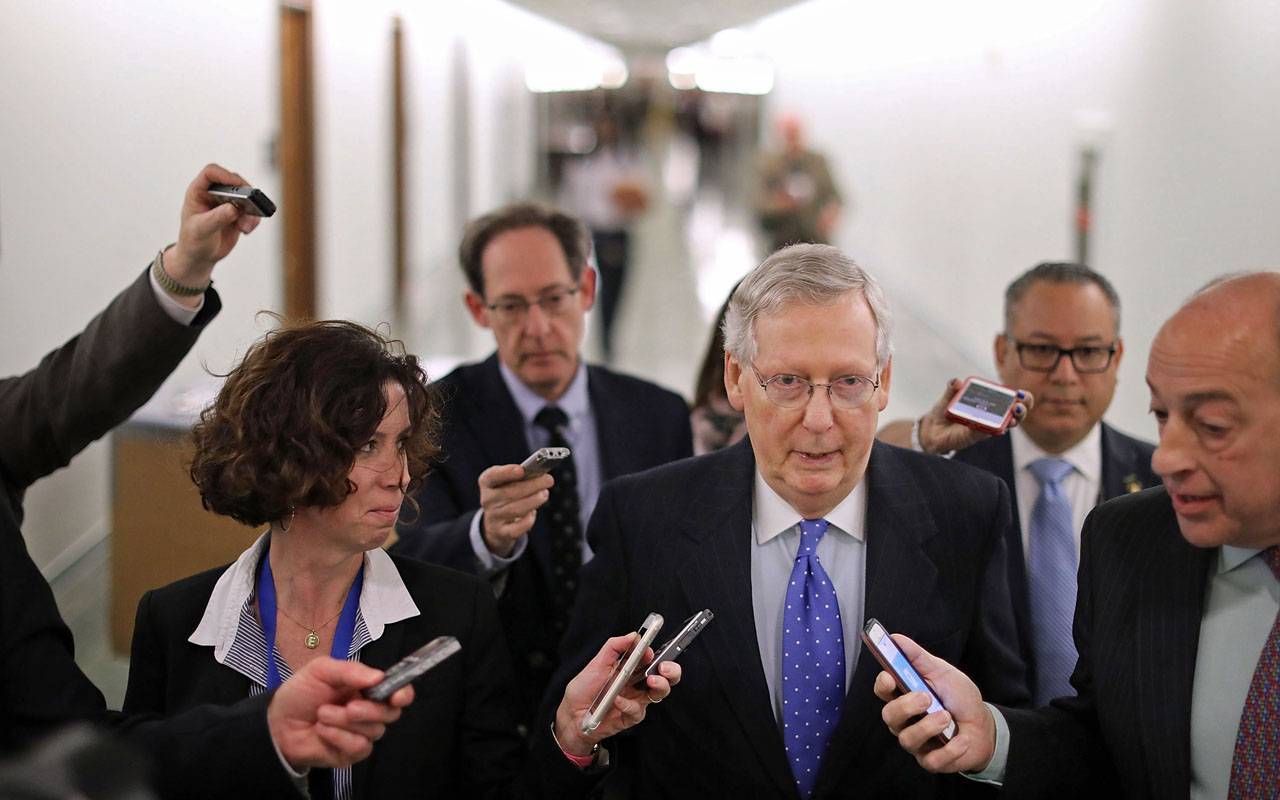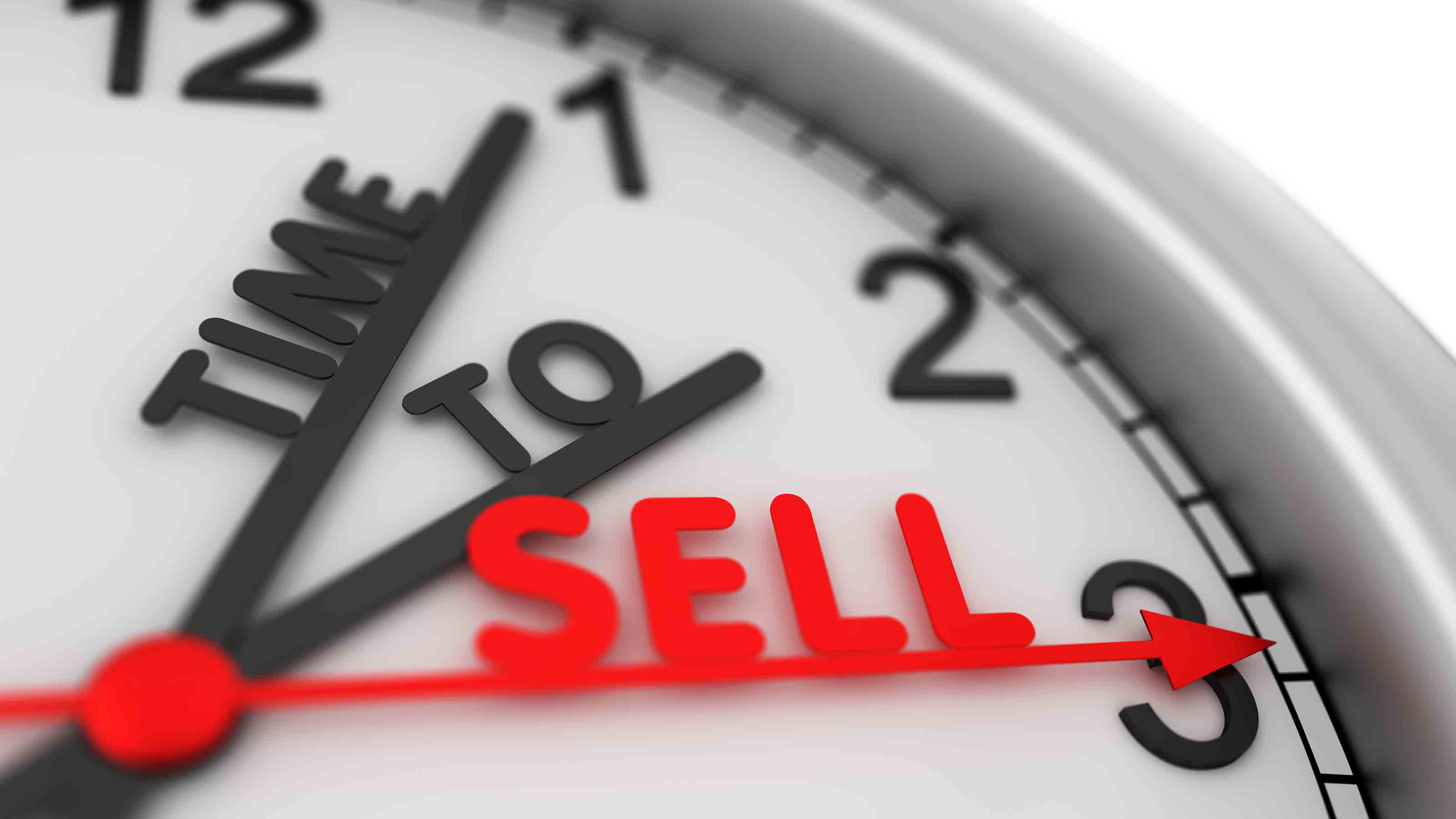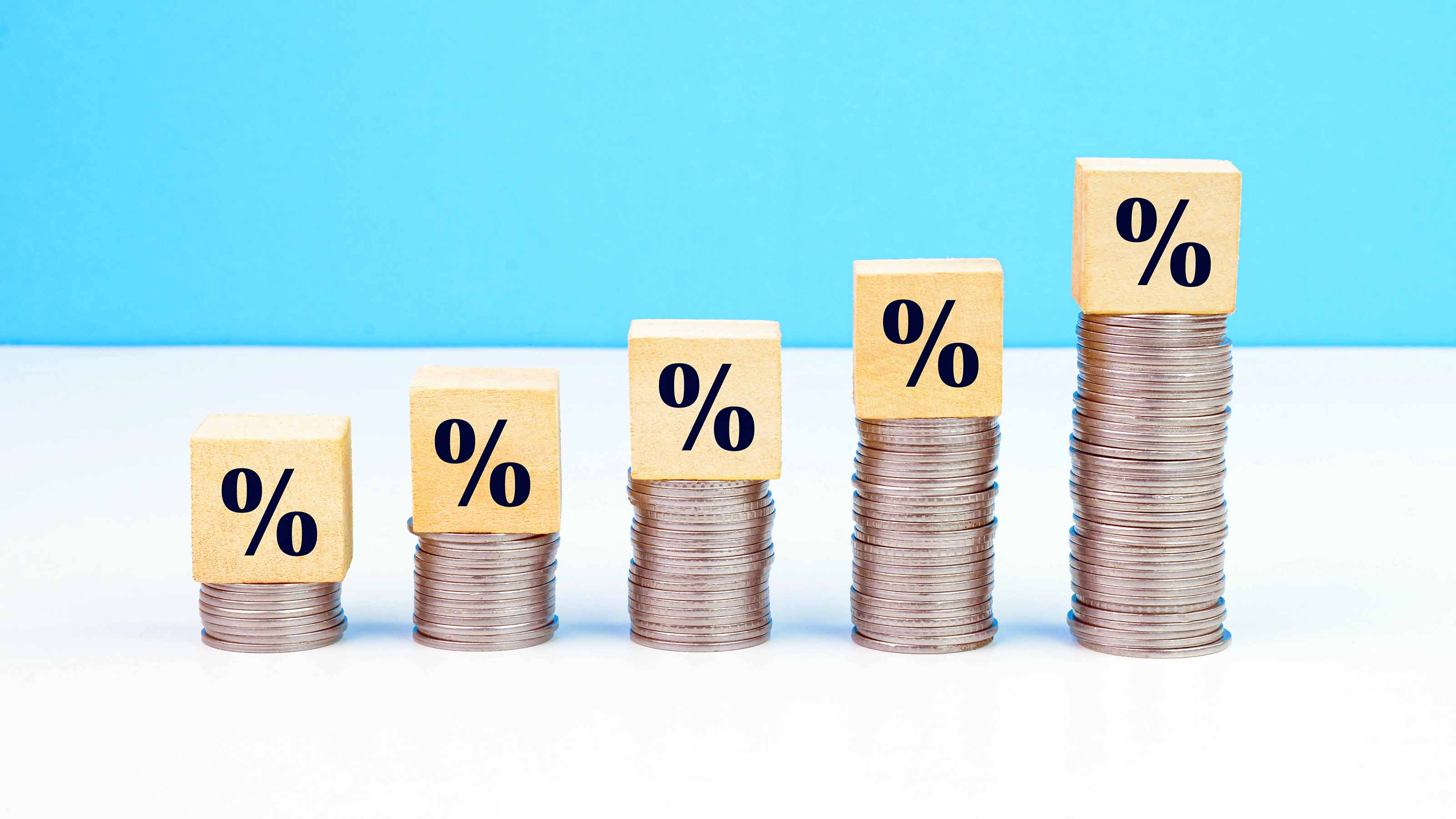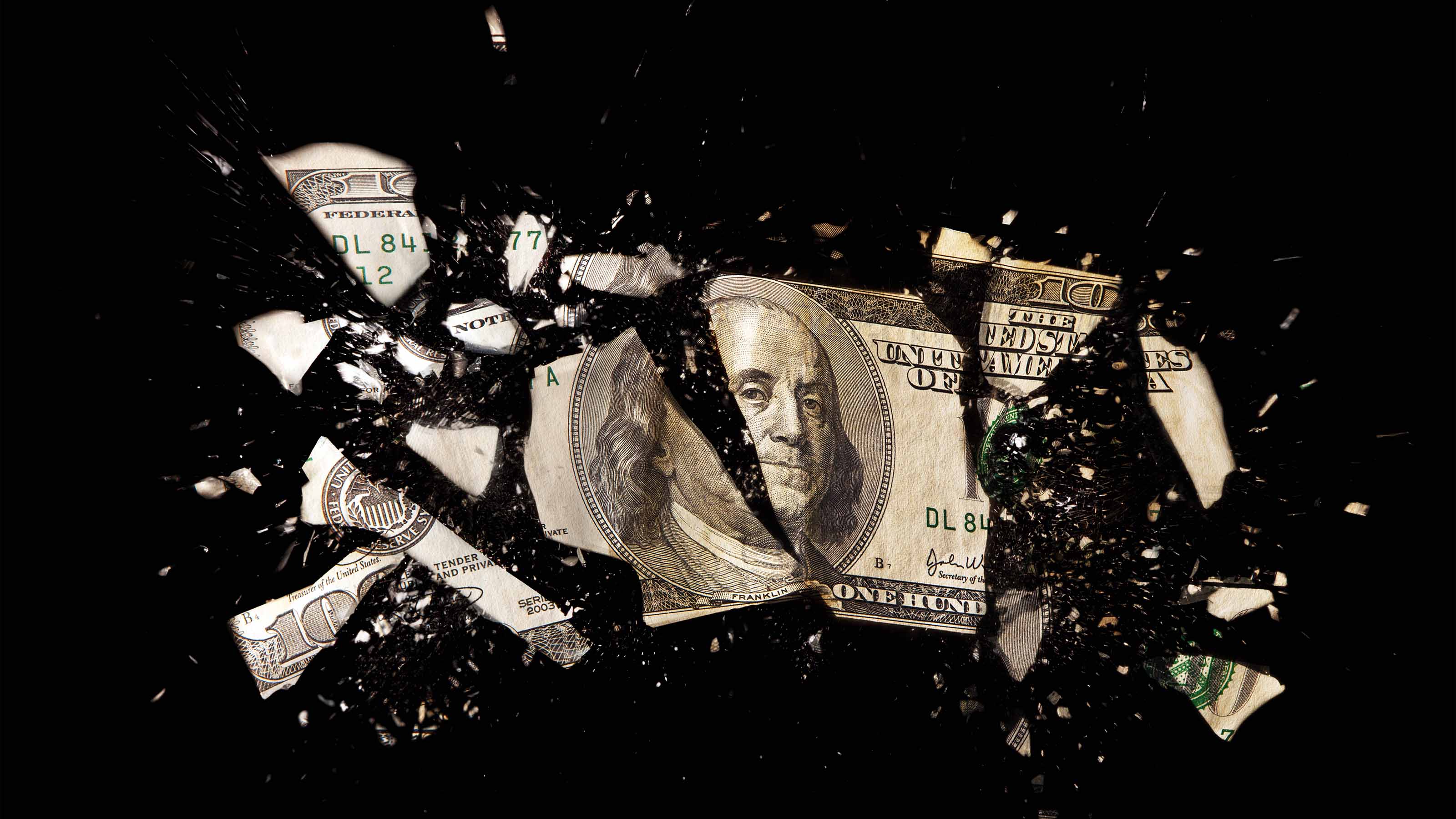The 7 Best ETFs for Trump's Tax Cuts
Republicans in the House and Senate have passed their respective versions of a sweeping tax overhaul over the past couple weeks.


Republicans in the House and Senate have passed their respective versions of a sweeping tax overhaul over the past couple weeks. The goal now: Reconcile those versions into a single piece of legislation that both groups of lawmakers can pass, then move them along to President Donald Trump, who has a stated goal of signing off on some sort of tax plan by Christmas.
That’s easier said than done, but right now, momentum is on Republicans’ side. And while details could change, we at least have a broad idea of what’s coming should the GOP succeed.
Investors could do well to start targeting and edging into positions that stand to benefit from a major overhaul of the American tax code. While they can do so via a few individual stock picks, the best ETFs geared toward broad tax cuts offer far more diversification while still being able to profit from this economic driver.
Here are the seven best ETFs to buy in anticipation of a Republican tax victory.
Data is as of Dec. 6, 2017. Yields represent the trailing 12-month yield, which is a standard measure for equity funds. Click on ticker-symbol links in each slide for current share prices and more.

iShares Russell 2000 ETF
- Market value: $46.2 billion
- Dividend yield: 1.2%
- Expenses: 0.2%, or $20 annually on every $10,000 invested
The Russell 2000 index of small-cap stocks has underperformed its large-cap brethren so far in 2017, but it has picked up a head of steam as tax cuts close in on becoming reality, gaining 11% in the past three months alone to outpace both the S&P 500 (7%) and Nasdaq (8%).
"It’s pretty clear from a corporate perspective that small caps are set to benefit the most” from Republican tax legislation, Goldman Sachs Asset Management’s Katie Koch told CNBC in September.
That’s largely because the corporate tax rate likely will be slashed from 35% to between 20% and 22%. While that’s a boon for companies of all sizes, Russell 2000 companies pay a higher median effective tax rate (31.9%) than those in the S&P 500 (28.0%) and Dow Jones (23.8%), mostly because of larger companies’ ability to avoid taxes by moving cash overseas.
The iShares Russell 2000 ETF (IWM, $150.22) is one of just two ETFs that track the Russell 2000, and by far the more established, at $46.4 billion in assets versus $1.2 million for the Vanguard Russell 2000 ETF (VTWO). The fund boasts a wide 1,979 holdings with an average market capitalization of less than $2 billion, making it an excellent proxy for the kinds of small, heavily domestic-facing companies that should enjoy an outsize benefit from Republican tax cuts.

Reality Shares DivCon Leaders Dividend ETF
- Market value: $33 million
- Dividend yield: 0.9%
- Expenses: 0.43%
Ever since Trump was elected, investors have salivated over the possibility of a big rush of internationally held cash coming back home to the U.S. The theory? Companies like Apple (AAPL) and Microsoft (MSFT), with billions of dollars stashed internationally to avoid America’s 35% corporate tax rate, will rush to bring it home if they’re offered a low repatriation rate. One of the potential uses for that cash would be a one-time “special” dividend to shareholders.
However, income investors could get a longer-term boost, too, thanks to a lowered corporate tax rate leaving more profits for companies for years down the road – profits that could be spent on hiking annual dividends.
“If there is a one-time repatriation, we fully believe that it will boost dividends across the board,” says Eric Ervin, CEO of Reality Shares, whose Divcon Leaders Dividend ETF (LEAD, $31.49) is specifically designed to target the kinds of companies that are willing and able to improve their payouts.
Reality Shares’ proprietary dividend rating methodology, DIVCON, identifies companies with the highest dividend potential – those that will grow their payouts the fastest, and pay out the most over time. Thus, these are the companies that may be likeliest to take any additional profits gained from lower corporate tax rates and put them back in the hands of shareholders.
Ervin also says this 50-stock portfolio “focuses on larger-cap stocks, which of course tend to have the most cash abroad.” LEAD component Apple is a prime example, with more than 90% of its $268.9 billion in cash and securities held overseas.

WisdomTree US Small-Cap Dividend ETF
- Market value: $2.1 billion
- Dividend yield: 2.7%
- Expenses: 0.38%
If you go to the intersection of two aforementioned trends – bullish prospects for small-cap stocks, and the potential for increased dividend payouts – you’ll find the WisdomTree US Small-Cap Dividend ETF (DES, $28.78).
The DES tracks the WisdomTree U.S. SmallCap Dividend Index, which takes a slightly complicated route to determining its components. First, it backs out the 300 largest companies from a broad WisdomTree dividend-equity index, selects the stocks within the bottom 25% by market cap, then weights them by projected annual dividends to be paid. The result is a small-cap ETF that yields like a blue-chip fund, at 2.7% currently.
At the moment, the fund is most heavily invested in consumer discretionary stocks (19.3%) – a sector that could get a significant lift as a result of Americans having a little more cash in their pockets. DES also holds plenty of industrial (18.7%) and financials (11.2%). Real estate investment trusts (REITs) – a high-yielding sector – make up 13.7% of the fund’s assets and contribute to its strong dividend.

SPDR S&P Retail ETF
- Market value: $816 million
- Dividend yield: 1.5%
- Expenses: 0.35%
The U.S. corporate tax rate may sit at 35%, but that doesn’t mean every company pays that – far from it. The average S&P 500 company actually pays an effective tax rate of 26.2%, with some sectors faring better, some worse.
Retail gets the sharpest horns, though, as the only industry to pay a full effective tax rate of 35%. And if any industry could use every last cent in profits it can muster, it’s retail.
Amazon.com (AMZN) and the rise of e-commerce have simply altered the playing field for brick-and-mortar retailers. Companies including Sears (SHLD), JCPenney (JCP) and Macy’s (M) are shells of their former selves – in large part thanks to the ease and convenience of online shopping keeping people away from their stores.
However, the holdings of the SPDR S&P Retail ETF (XRT, $44.11) – a retail fund that has enjoyed a short revival during the holiday shopping season – could get a much-needed lifeline from a corporate tax cut. In turn, that would allow holdings such as Express (EXPR) and L Brands (LB) to keep more of their precious profits, and plow them into improving their own e-commerce strategies while trying to figure out how to salvage the brick-and-mortar operations.
It’s unlikely that a corporate tax cut will save the dying members of the brick-and-mortar retail industry. But it would at least boost short-term outlooks among even the weakest companies, and could give the better operators a real shot to compete.

iShares U.S. Aerospace and Defense ETF
- Market value: $4.9 billion
- Dividend yield: 1.0%
- Expenses: 0.44%
Another industry that could see an outsize benefit from corporate tax cuts is aerospace and defense.
Baird analyst Peter Arment wrote in a Dec. 4 report that these companies could enjoy an 8%-13% boost in earnings per share over the next two years should Republicans pass tax legislation that brings the corporate rate down to 20%. That would be an enormous improvement from the industry’s average 28% tax rate.
“The impact of the pending corporate tax reform to a 20 percent rate could be very favorable for most aerospace and defense companies within our coverage universe with domestic-oriented defense companies well positioned for higher earnings,” he wrote.
The iShares U.S. Aerospace and Defense ETF (ITA, $183.16) is a who’s who of the industry, featuring names such as Boeing (BA), United Technologies (UTX) and Lockheed Martin (LMT).
The 38-holding portfolio is admittedly tight, and its cap-weighted nature results in a top-heavy fund, including an 11% weight in BA and 8% in UTX. However, ITA also has significant holdings in Northrop Grumman (NOC) and Raytheon (RTN) – two stocks Arment believes will be the “top beneficiaries” of a lower rate.
Overall, ITA provides honest exposure to defense and aerospace stocks, and does so for a modest 0.44% in annual expenses.

Robo Global Robotics & Automation ETF
- Market value: $1.9 billion
- Dividend yield: 0.1%
- Expenses: 0.95%
While suddenly cash-flush companies may spend some of their newfound riches rewarding shareholders, some of that cash is going to go back to improving their own businesses. And for many companies, improvement means ramping up investments in robotics and artificial intelligence to “keep up with the Joneses.”
If so, that could mean big things for the component companies of the Robo Global Robotics & Automation ETF (ROBO, $40.27).
“We are in the middle of a robotics arms race,” says William Studebaker, President and CIO of ROBO Global, which provides the ROBO ETF. “These are technologies that companies need to invest in to stay relevant. When you look across all industries, the pace of investment is only accelerating.”
Studebaker points out big spending by Amazon, which plans to shell out $50 billion over the next five years on things such as infrastructure and systems logistics, and Alibaba (BABA), which is making $15 billion in similar investments over the next three years. But the need doesn’t end there. “If you look at brick and mortar retailers, the only chance they have of surviving is incorporating this technology, be it via logistics, digital marketing or other mediums,” he says.
ROBO is a globally diversified mix (55% international) of 92 holdings include several companies that could see extra business should U.S. companies retain more of their profits thanks to tax cuts. For instance, Japan’s Yaskawa Electric (YASKY) is a leader in industrial robotics whose Motoman subsidiary currently boasts more than 150 robot models in production. There's also Cognex (CGNX), an American developer of machine vision systems that help manufacturers inspect and guide parts.

GraniteShares Gold Trust
- Market value: $5.1 million
- Dividend yield: N/A
- Expenses: 0.2%
- GraniteShares Gold Trust (BAR, $127.30), like larger competitors SPDR Gold Shares (GLD) and iShares Gold Trust (IAU), offers investors exchange-traded exposure to actual gold bullion stored in vaults.
The S&P 500 has produced a total return of more than 26% between Election Day 2016 and the end of November 2017 – largely built on the expectation of several things, including tax cuts and financial deregulation. Stock valuations are high, the bull market is ancient at nearly nine years old, and numerous market analysts say this run is untenable.
That leads to one potential outcome that has largely been swept under the rug: a “sell the news” event. This refers to the “buy the rumor, sell the news” phenomenon in which people bid up an asset on expectations that something will happen, then sell once that hope becomes reality. In this case, a green light on tax cuts would be “the news,” potentially triggering volatility and even a broad stock selloff.
In such an event, gold – an asset that many investors flock to in times of economic and market uncertainty – could become a popular safe haven once more.
“It’s not tethered to futures, but physical gold,” says GraniteShares CEO Will Rhind. “We don’t lend out any of the gold, and we have annual audits where a third-party inspector audits the bars.”
But the young fund, which hit the markets Aug. 31, 2017, came out swinging at larger competitors with a lowest-in-class annual expense ratio of 0.2% – below IAU’s 0.25% and half of GLD’s 0.4% – for the same type of gold exposure. GraniteShares says it’s able to undercut its competitors because it’s not maintaining a large sales force or global offices.
“We’re establishing a low-cost commodity ETF offering because no one has done that,” Rhind says. “That’s an important differentiator; Vanguard doesn’t do commodities.”
Profit and prosper with the best of Kiplinger's advice on investing, taxes, retirement, personal finance and much more. Delivered daily. Enter your email in the box and click Sign Me Up.
Kyle Woodley is the Editor-in-Chief of WealthUp, a site dedicated to improving the personal finances and financial literacy of people of all ages. He also writes the weekly The Weekend Tea newsletter, which covers both news and analysis about spending, saving, investing, the economy and more.
Kyle was previously the Senior Investing Editor for Kiplinger.com, and the Managing Editor for InvestorPlace.com before that. His work has appeared in several outlets, including Yahoo! Finance, MSN Money, Barchart, The Globe & Mail and the Nasdaq. He also has appeared as a guest on Fox Business Network and Money Radio, among other shows and podcasts, and he has been quoted in several outlets, including MarketWatch, Vice and Univision. He is a proud graduate of The Ohio State University, where he earned a BA in journalism.
You can check out his thoughts on the markets (and more) at @KyleWoodley.
-
 How to Safely Open an Online Savings Account
How to Safely Open an Online Savings AccountOnline banks offer generous APYs that most brick-and-mortar banks can't match. If you want to make the switch to online but have been hesitant, I'll show you how to do it safely.
-
 7 Ways to Age Gracefully Like the Best Stock Photo Seniors
7 Ways to Age Gracefully Like the Best Stock Photo SeniorsAs a retirement editor, I've gleaned valuable wisdom (and a lot of laughs) from one older couple that tops the seniors' stock photo charts.
-
 My First $1 Million: Banking Executive, 48, Southeast U.S.
My First $1 Million: Banking Executive, 48, Southeast U.S.Ever wonder how someone who's made a million dollars or more did it? Kiplinger's My First $1 Million series uncovers the answers.
-
 The 24 Cheapest Places To Retire in the US
The 24 Cheapest Places To Retire in the USWhen you're trying to balance a fixed income with an enjoyable retirement, the cost of living is a crucial factor to consider. Is your city the best?
-
 5 Stocks to Sell or Avoid Now
5 Stocks to Sell or Avoid Nowstocks to sell In a difficult market like this, weak positions can get even weaker. Wall Street analysts believe these five stocks should be near the front of your sell list.
-
 Best Stocks for Rising Interest Rates
Best Stocks for Rising Interest Ratesstocks The Federal Reserve has been aggressive in its rate hiking, and there's a chance it's not done yet. Here are eight of the best stocks for rising interest rates.
-
 The Five Safest Vanguard Funds to Own in a Volatile Market
The Five Safest Vanguard Funds to Own in a Volatile Marketrecession The safest Vanguard funds can help prepare investors for market tumult but without high fees.
-
 The 5 Best Inflation-Proof Stocks
The 5 Best Inflation-Proof Stocksstocks Higher prices have been a major headache for investors, but these best inflation-proof stocks could help ease the impact.
-
 5 of the Best Preferred Stock ETFs for High and Stable Dividends
5 of the Best Preferred Stock ETFs for High and Stable DividendsETFs The best preferred stock ETFs allow you to reduce your risk by investing in baskets of preferred stocks.
-
 What Happens When the Retirement Honeymoon Phase Is Over?
What Happens When the Retirement Honeymoon Phase Is Over?In the early days, all is fun and exciting, but after a while, it may seem to some like they’ve lost as much as they’ve gained. What then?
-
 5 Top-Rated Housing Stocks With Long-Term Growth Potential
5 Top-Rated Housing Stocks With Long-Term Growth Potentialstocks Housing stocks have struggled as a red-hot market cools, but these Buy-rated picks could be worth a closer look.

